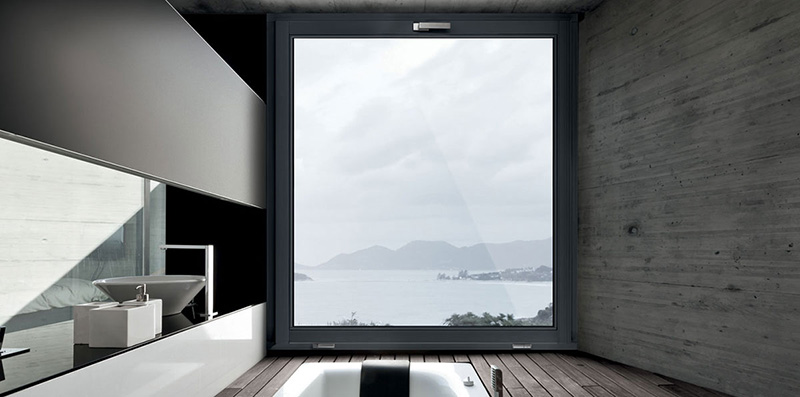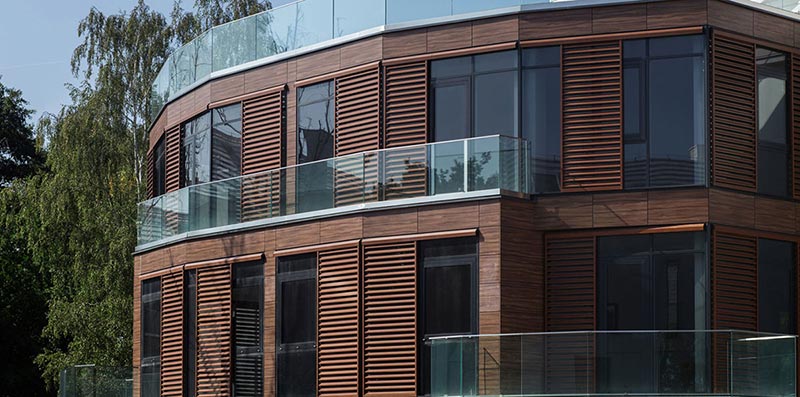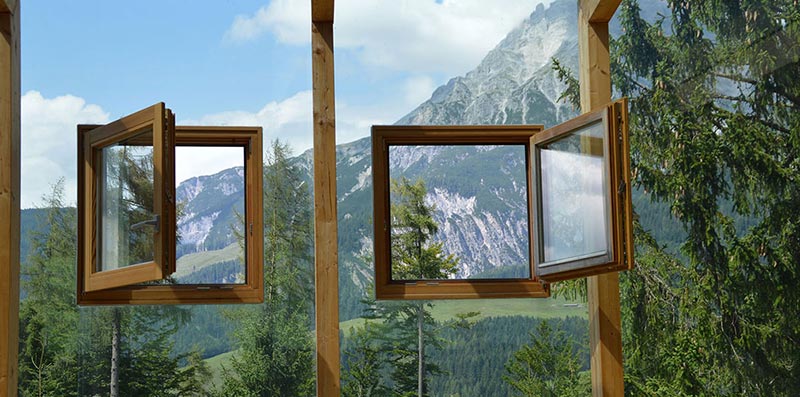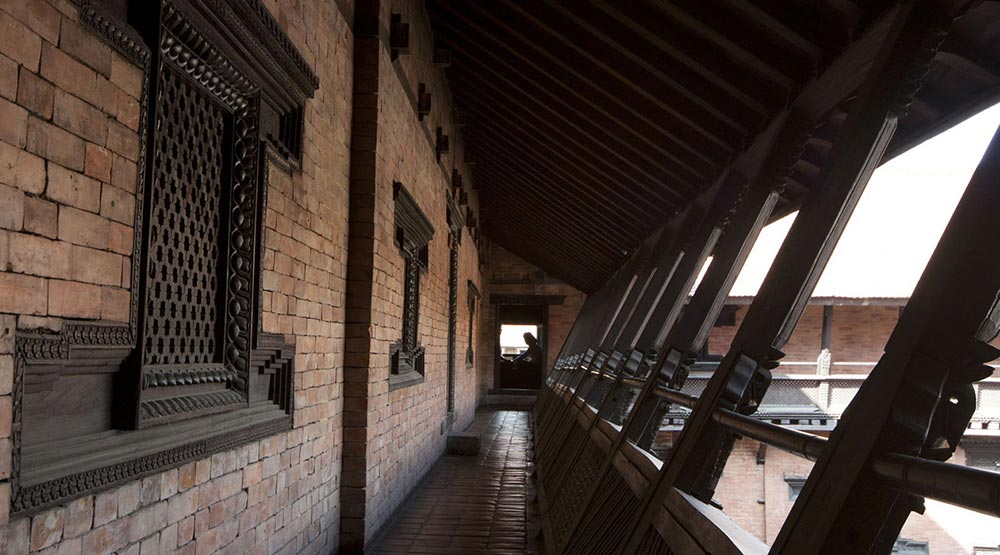Reflections and ideas for a more conscious and careful choice, so as not to fall into false beliefs and misleading slogans.
For years now, the tough battle between PVC and wood has been raging in the window and door sector, often creating confusion and bewilderment in the end consumer who finds himself having to choose between a material that has always been considered absolutely valid and a modern alternative that promises the same performance at lower prices.
And according to this last sentence it would seem that little is left to say about it: why spend more if I can have the same benefits at a lower price? It’s certainly a reasonable question.
Often, however, as in many other situations, it is advisable to go a little deeper into the issue, investigating both alternatives with a critical eye, having a little more patience.

Personally, at first glance, I would immediately ask a question: why, if PVC is really so good, does it often “dress up” itself as what it is not? Wood, precisely. All this “wood effect” PVC material that we see offered on the market should already tell us something about it. Certainly, on an aesthetic level, our dear “old” friend wood has no equals: the multiplicity of shapes, models and colors that it has available makes it absolutely more suitable for satisfying the most diverse needs and tastes possible, lending itself to imitations that represent, in fact, copies of an original which one tends towards for a quality considered to be higher, at least from an aesthetic point of view. Already at a first observation, therefore, we find ourselves faced with materials that tend to imitate an aesthetic result that is not their own, immediately defining a lack that is not exactly trivial.
But let’s get to the real crux of the matter: is PVC actually cheaper than wood?
Starting from the premise that to make a real comparison between the two materials it is necessary to make a comparison between estimates that take into consideration the same characteristics and performances offered. And this is where things get complicated. The invasion suffered in recent years by low quality PVC windows and frames, especially from Eastern Europe, makes a more careful evaluation of the material purchased at a lower price essential. But not only that, the type of PVC used also makes a difference: it is useful to ask ourselves whether what is proposed to us is class S (Severe climate) or class M (Moderate climate). This is because most of what is advertised as cheaper is usually class M, therefore not suitable for our climate characterized by intense sunshine during the summer period accompanied by strong irradiation of UV rays. All this causes excessive stress for a material not predisposed to such stresses, causing its premature deterioration and therefore compromising its real durability over time. The substantial difference, from a production point of view, between S or M class lies precisely in the anti-UV additives used, and can determine a price variation of 20 to 30% to the detriment of the more high-performance S class.

And here we come to another crucial point: the actual durability of the different materials over time. Let’s start from the fact that the National Building Federation’s “Standards and Quality in Development” document states that PVC frames have a life expectancy of 20-25 years, compared to 25-30 for softwood frames. The “Green Building Digest” states that well-made and properly maintained wooden windows can last as long as the building in which they are installed.
Interesting evaluations if you consider that maintenance is necessary in the presence of both materials. It is therefore not correct to say that PVC window and door frames should not be cleaned, on the contrary! This material is highly sensitive to sun exposure which can cause color changes (be it banally white or more refined such as the wood effect) or problems with the fixing of the covering film in the case of dated and old generation profiles. It is therefore absolutely advisable to clean your PVC windows and doors every six months. All this also in view of the very important fact that PVC windows are very difficult to repair if any component suffers damage; in fact, it is often necessary to replace the entire window.
On the contrary, wooden frames and all their components are easily repairable and only in extreme cases need to be replaced. Furthermore, thanks to modern water-based paints, better and very different from the synthetic ones used in the past, current wooden windows require very normal and minimal “ordinary” maintenance thanks to which they can have a significantly longer life than those in PVC.

Not to mention the true eco-sustainability of the materials.
There are numerous and complex environmental problems relating to the production, use and disposal of PVC which contains a high percentage of chlorine, an element considered highly polluting. In fact, wooden windows and doors are recyclable, while PVC ones are absolutely not. Wood itself is also a renewable resource: depending on the type, the life cycle of wood ranges from 30 to 100 years, and it is the only natural resource with a practically infinite life cycle, allowing both ecological and economic benefits. Greenpeace states in the publication “Framing the view. Window frames for a sustainable future”: “(..) a wooden window frame saves energy both in its production and during its use, uses a minimum quantity of finite resources, is reasonably easy to maintain and repair, lasts more than any product currently available and is biodegradable and can be recycled at the end of its useful life. No other material meets these requirements and has hundreds of years of use to prove it.”
But speaking banally in concrete terms according to what has been said so far: if a medium-sized double-sash window in white PVC (usually the cheapest) costs around 300.00 euros; a colored PVC window with a “wood effect” costs on average 370.00 euros and the same wooden window is offered on the market at a cost of around 400.00 euros: where is the real convenience?*
*SOURCES: Leroy Merlin Italia Bricoman Italia Moda Edile

